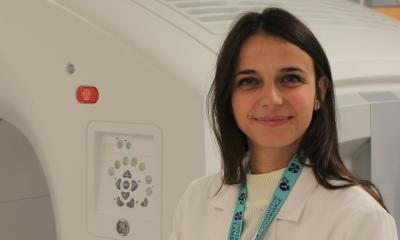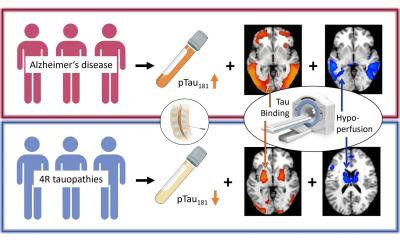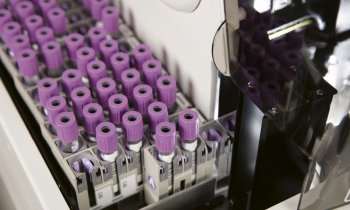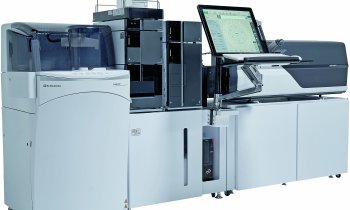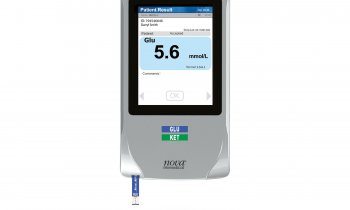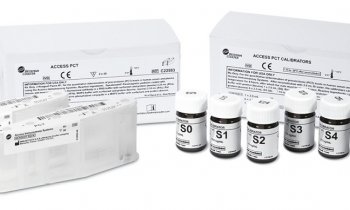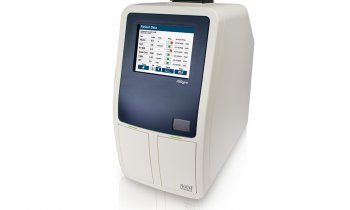News • Proteins for personalized treatments
Tracking Duchenne muscular dystrophy with blood biomarkers
Researchers from Leiden University Medical Center (LUMC) and the University of Florida have found hundreds of blood proteins in people with Duchenne muscular dystrophy (DMD) that reflect disease progression.

Image source: LUMC
Measuring these biomarkers is less invasive than physical tests or biopsies and could support more tailored treatment decisions and help identify suitable candidates for clinical trials.
The research was recently published in the scientific journal Nature Communications.
Duchenne muscular dystrophy is a severe rare genetic condition that mainly affects young boys, with symptoms usually appearing between the ages of 2 and 5. Over time, their muscles gradually weaken, starting in the legs and later affecting the arms, shoulders, heart and other parts of the body. Most boys with Duchenne lose the ability to walk between the ages of 10 and 12 and become dependent on a wheelchair. As the disease progresses, they may also lose the ability to lift their arms, feed themselves, or breathe independently often requiring assisted ventilation in their teens or early adulthood.
So far, it has been difficult to predict how quickly that decline will happen. Doctors often rely on physical tests, such as walking a certain distance, reaching overhead, or feeding oneself. But these tests aren’t always reliable or objective.
“These tests can be exhausting and aren’t always feasible, especially when someone is having a bad day physically. We also know that young children sometimes perform better when they’re promised a reward, which means the results can’t always be trusted. And because every patient progresses differently, you can’t easily compare one person’s decline to another’s. That’s why we need objective tools, like blood-based biomarkers, that give us a clearer picture of someone’s current condition and how it’s changing,” says Nadine Ikelaar, PhD student at the Neurology department.

Image source: LUMC
A blood test is far less burdensome than a walking test or muscle biopsy. Pietro Spitali, associate professor at the Department of Human Genetics, explains: “It’s quick, minimally invasive, and doesn’t depend on how someone feels on the day of testing. If doctors can monitor disease progression through blood, they can tailor treatments more effectively. It also helps researchers evaluate new therapies more quickly, without relying on physical tests that are tiring, subjective, or not always feasible.”
To explore this possibility, researchers at the LUMC, in close collaboration with the LUMC Biobank, collected blood samples from people with Duchenne muscular dystrophy over a period of more than ten years. At each time point, they also recorded clinical features so they could later compare these with the blood data. A similar dataset was collected in the United States by the university of Florida. These two independent cohorts enabled a retrospective study. In such a study, researchers don’t follow patients forward in time, but instead look back at existing samples and records to find patterns. The researchers analyzed 702 blood samples from 153 people with Duchenne. They used a technique that can measure over 6.600 proteins at once. Data analysis across both centers was facilitated by the company Biosymetrics.
By linking the information from blood proteins to the data in the medical records, the researchers were able to look for patterns. Ikelaar: “We wondered whether the presence of certain proteins could tell us something about key moments in the disease, such as when someone can no longer walk or can no longer use their arms properly.”
The goal is to treat patients when there is still muscle mass to protect. That is usually before the age of eight. But at that age, physical tests don’t always show decline yet
Pietro Spitali
The researchers identified hundreds of proteins in the blood of people with Duchenne muscular dystrophy that are linked to disease progression. Some of these proteins were associated with the use of corticosteroids. “Corticosteroids are widely used to help control symptoms and can slow down muscle degeneration. Understanding how these proteins respond to corticosteroid use, helps us distinguish between protein changes caused by the treatment and those caused by the disease progression,” Spitali said.
Other proteins reflected physical abilities such as walking or arm function. A small group of proteins including RGMA, ANTXR2, and ART3 stood out because they were strongly linked to both leg and arm function loss. Importantly, the results were validated in two large, independent patient cohorts. This strengthens the reliability of the findings and suggests that the identified biomarkers are not specific to one group or study setting but may be broadly applicable in clinical practice.
This study lays the groundwork for a new way of monitoring Duchenne muscular dystrophy. One that relies on objective measurements of blood proteins rather than physical performance alone. Spitali explains: “The goal is to treat patients when there is still muscle mass to protect. That is usually before the age of eight. But at that age, physical tests don’t always show decline yet. Children are actually improving in part of their growth. Later in life, when physical symptoms are clearer and muscle strength is declining, it’s easier to measure physical changes. But by then, much of the muscle is already lost, and treatments are therefore less effective.”
This creates a challenge, not only for doctors treating their patients but also for researchers testing new medicines. To see if a treatment works, you need muscle mass to respond. Blood tests could help bridge this gap as they objectively show which young patients are likely to decline, even before symptoms appear. In clinical practice, these biomarkers could support more tailored treatment decisions, allowing doctors to intervene before major milestones are reached. Spitali: “These findings are paving the way for innovative outcome measures that are less burdensome and more precise, bringing us closer to truly personalized care for people with Duchenne.”
Source: Leiden University Medical Center
21.10.2025




